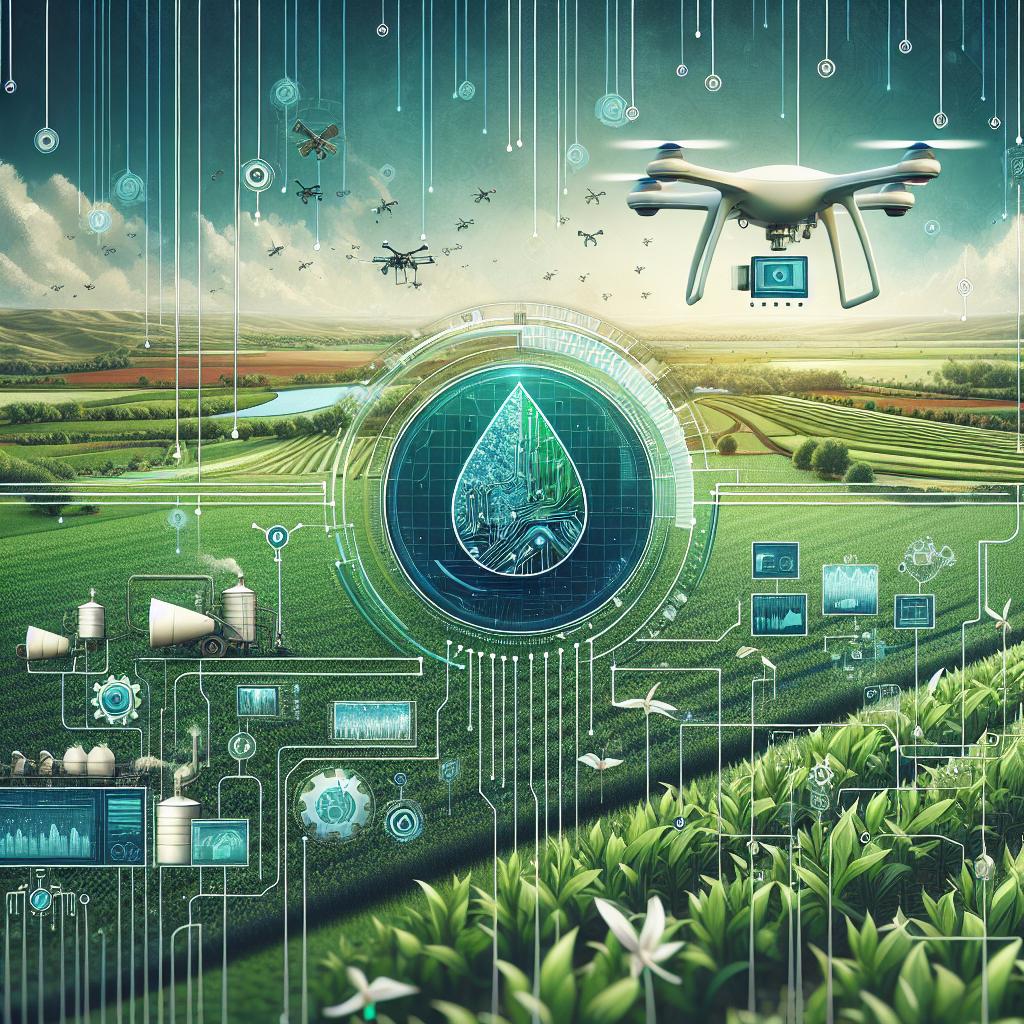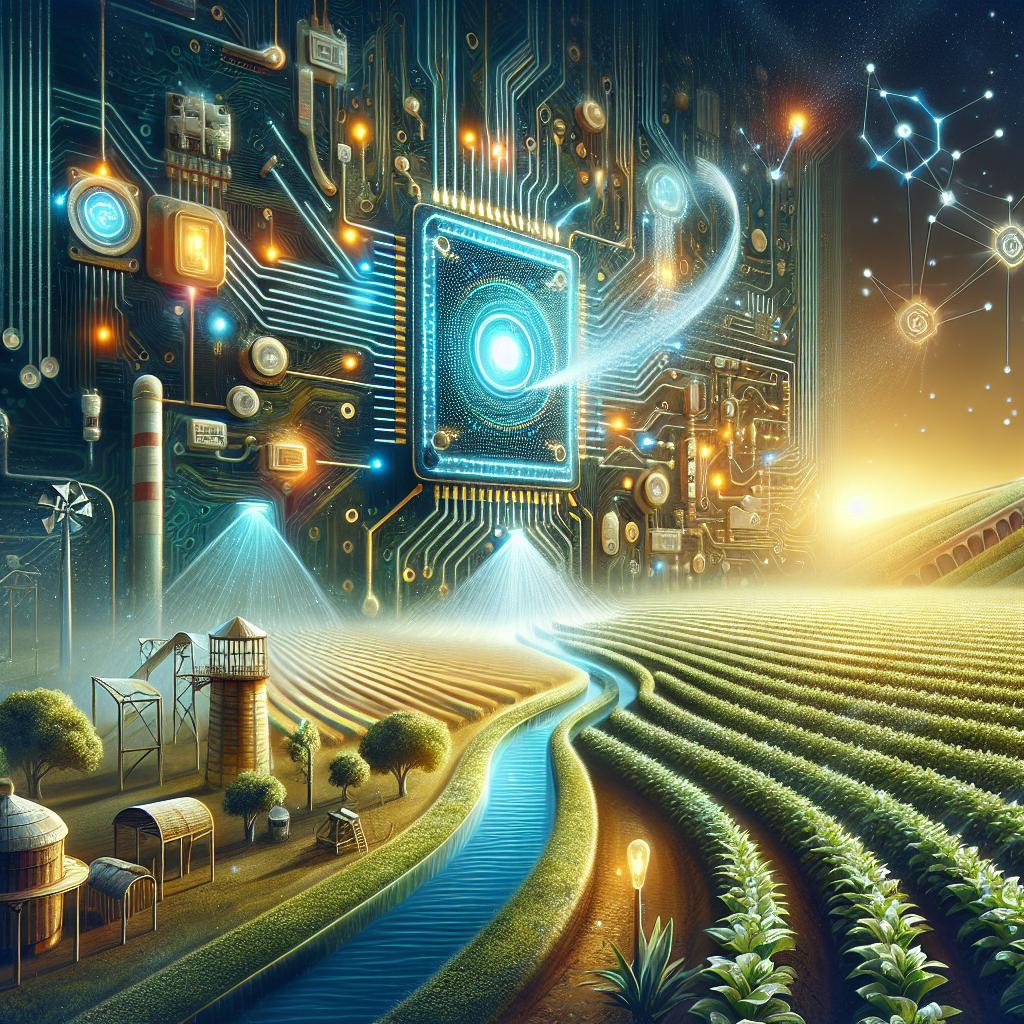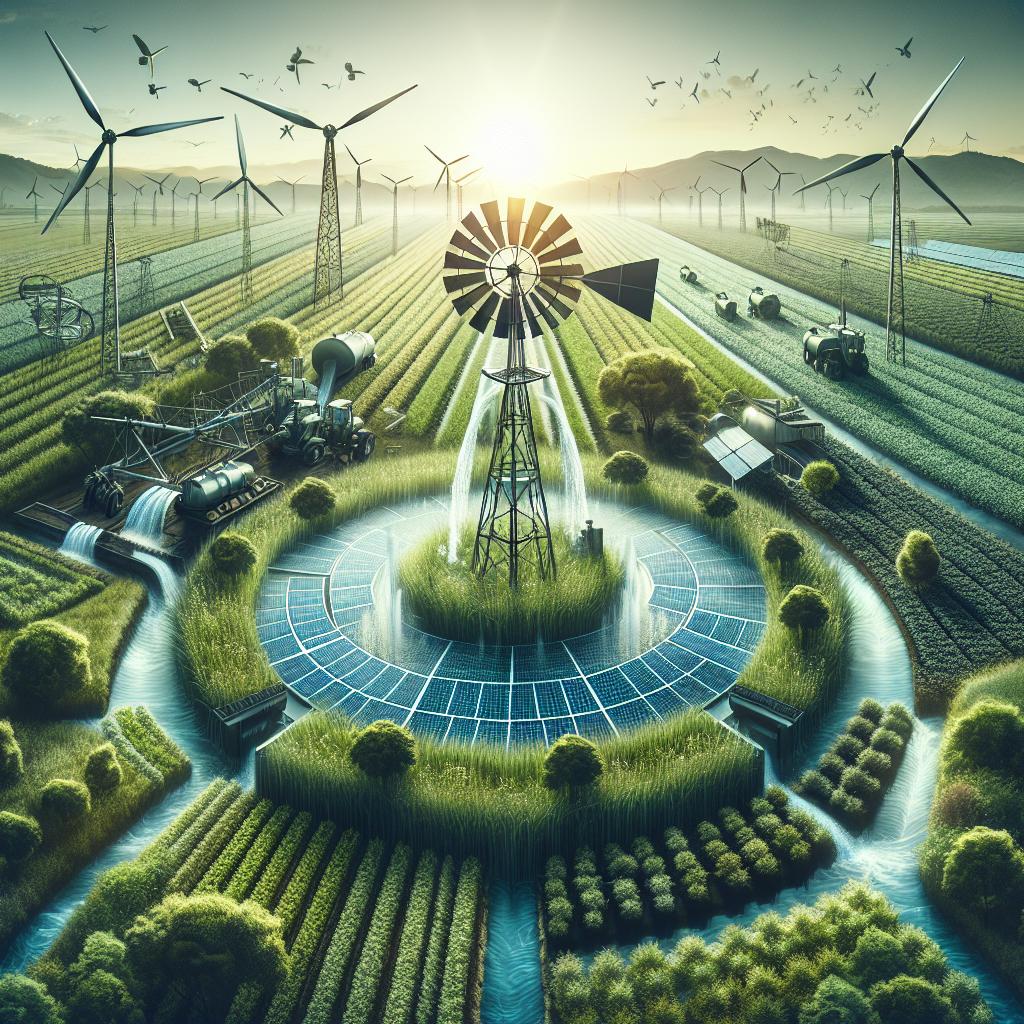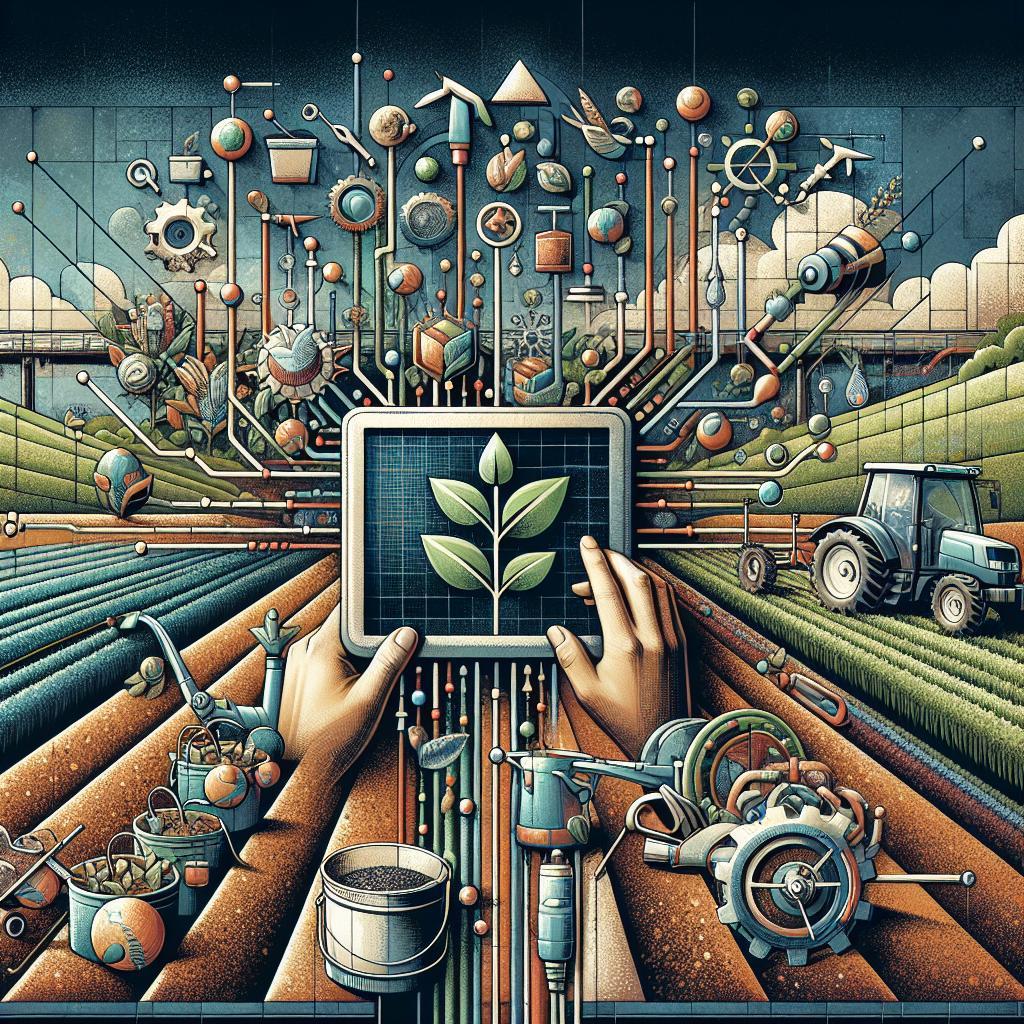This post may contain affiliate links which means I may receive a commission for purchases made through links. Learn more on my Private Policy page.
Introduction: Cultivating Harmony – The Symphony of Integrated Irrigation and Farming Technologies
Imagine a farm where every drop of water dances in harmony with the soil, plants, and cutting-edge technology. Welcome to the world of integrated irrigation systems, where innovation meets tradition in a symphony of sustainability and efficiency. In today’s fast-paced agricultural landscape, farmers are not just stewards of the land; they are tech-savvy pioneers harnessing the power of modern technology to enhance productivity and conserve precious resources. From intelligent sensors that monitor moisture levels to automated systems that deliver water precisely when and where it’s needed, the integration of irrigation with other farming technologies is revolutionizing the way we grow our food. Join us as we explore how this marriage of methods can create a thriving ecosystem that not only nourishes our crops but also respects the environment, paving the way for a brighter, greener future in farming. Let’s dig in and discover the endless possibilities that await in this brave new agricultural world!
Harnessing Precision agriculture for Smarter Water Management
Enhancing water efficiency in agriculture is crucial for enduring farming, and precision agriculture plays a significant role in achieving this goal. By integrating irrigation systems with advanced technology, farmers can achieve a harmonious balance between the use of water and crop health. Smart sensors placed throughout the fields can monitor soil moisture levels in real-time, allowing for automated irrigation adjustments based on the specific needs of crops. This not only conserves water but also promotes optimal growth conditions,resulting in better yields.
Moreover, data analytics can help identify patterns and predict water demand, creating an ecosystem where farmers make informed decisions. Utilizing tools such as drones for aerial imagery and crop health assessment can provide valuable insights into areas that require more water or support. Additionally, integrating renewable energy sources like solar panels with irrigation systems can further reduce operational costs. By developing interconnected farming technologies, we can create a synergistic approach to smarter water management:
| Technology | Benefit |
|---|---|
| Smart Sensors | Real-time moisture monitoring |
| Drones | Aerial assessments for crop health |
| Data Analytics | Forecasting water needs |
| Solar Panels | Reduced energy costs |

Embracing IoT Devices to Enhance Irrigation Efficiency
In today’s agricultural landscape, incorporating iot devices is crucial for creating a more efficient irrigation system. These innovative technologies allow farmers to collect real-time data about soil moisture, weather forecasts, and crop health, enabling them to make informed decisions that enhance water usage. By utilizing smart sensors and connected equipment, farmers can automatically adjust irrigation schedules based on actual conditions rather than relying on outdated practices. This not only conserves water but also promotes healthier crop growth, resulting in increased yields.The seamless integration of IoT with customary irrigation systems empowers farmers to embrace precision agriculture, leading to a sustainable future for farming.
Moreover, the benefits of these devices extend beyond mere water management. By embracing a networked approach, farmers can establish collaborative ecosystems where irrigation systems communicate with weather stations, drones, and crop management software. This interconnectedness leads to comprehensive insights and strategies that resonate across various farming operations. As an example, combining irrigation data with aerial imagery from drones can help farmers pinpoint areas needing extra care or nutrients, optimizing resource allocation. With easy-to-use dashboards, farmers can track performance metrics and adjust practices in real-time, bridging the gap between technology and tradition for maximum impact.

Sustainable Practices: Merging Irrigation with Renewable Energy Sources
Incorporating renewable energy sources into irrigation systems creates a harmonious blend of sustainability and productivity. by leveraging solar, wind, or even biogas energy, farmers can substantially reduce their carbon footprint while maintaining optimal crop yields. This synergy not only conserves natural resources but also promotes resilience in agricultural practices. The shift to renewable energy can deliver several benefits:
- Cost savings: Reduced reliance on fossil fuels can lower operational costs.
- Energy Independence: Home-grown energy sources mitigate the impact of fluctuating energy prices.
- Environmental Benefits: Decreased greenhouse gas emissions contribute to a healthier ecosystem.
In practice,a combination of advanced irrigation methods,such as drip or sprinkler systems,integrated with renewable energy can optimize water usage and increase efficiency. For instance, the use of smart sensors paired with solar-powered pumps allows for real-time data monitoring and precise water delivery, ensuring that crops receive the exact amount they need. This technology amalgamation supports sustainable agriculture by enabling farmers to:
| Benefit | Details |
|---|---|
| Optimize Resources | efficient water and energy use maximizes yield potential. |
| enhance Crop Health | Consistent and adequate watering leads to stronger plants. |
| Promote Biodiversity | Healthy ecosystems support various plant and animal life. |

Data-driven Decisions: The role of Analytics in Optimizing Water Use
In today’s interconnected agricultural landscape, the use of analytics to assess water usage is essential for enhancing productivity and sustainability. Farmers can leverage various data sources to gain comprehensive insights into how much water their crops require, influenced by factors such as soil moisture levels, weather patterns, and crop types. By integrating advanced irrigation systems with data analytics tools,they can make real-time adjustments to irrigation schedules,ensuring that crops receive optimal hydration without excess wastage.This not only conserves water but also promotes healthier crop growth and improved yields.
Moreover, smart farming technologies can collect and analyze data from multiple sources, creating a holistic view of the farm’s resources. With the implementation of sensors and drones, farmers can gather critical data and use it effectively. Key components of this integration include:
- Soil Moisture Sensors: Monitor and provide insights related to the moisture levels in real-time.
- Weather Forecasting Tools: Predict the weather to optimize irrigation schedules based on anticipated rainfall.
- Data Management Software: Analyze data trends to forecast irrigation needs and adjust operations accordingly.
Implementing these technologies not only streamlines operations but also fosters a more sustainable approach to farming. Below is a simple overview of the benefits associated with data-driven irrigation:
| Benefit | description |
|---|---|
| Water Conservation | Reduces water usage by applying only when necessary. |
| Enhanced Crop Yield | Optimal watering promotes healthier plants and higher returns. |
| Cost Savings | Lower water bills and reduced labor costs due to automation. |
Key Takeaways
As we wrap up our journey through the innovative world of integrating irrigation systems with other farming technologies, it’s clear that the future of agriculture is not just about fields and crops—it’s about connections and collaboration. By harnessing the power of smart technology, farmers are not only optimizing water usage but also enhancing productivity, sustainability, and the overall health of our planet.
Imagine a farm where every drop of water is meticulously managed, every crop thrives in its ideal environment, and technology works seamlessly behind the scenes to make it all happen. This vision is becoming a reality,one drip at a time,as advancements in agriculture bring us closer to a harmonious balance between nature and innovation.
As you venture into your own agricultural endeavors,remember that you’re not just cultivating the land; you’re nurturing a complex ecosystem. Embrace these technologies with open arms, experiment boldly, and share your successes and challenges with your fellow farmers. Together, we can cultivate a future that’s not only fruitful but also sustainable.Thank you for joining us on this exploration of irrigation integration! may your fields flourish,your water flows wisely,and your farming journey be both prosperous and fulfilling.Here’s to the bright future of agriculture—let’s grow it together, one innovation at a time!
This post may contain affiliate links which means I may receive a commission for purchases made through links. Learn more on my Private Policy page.

